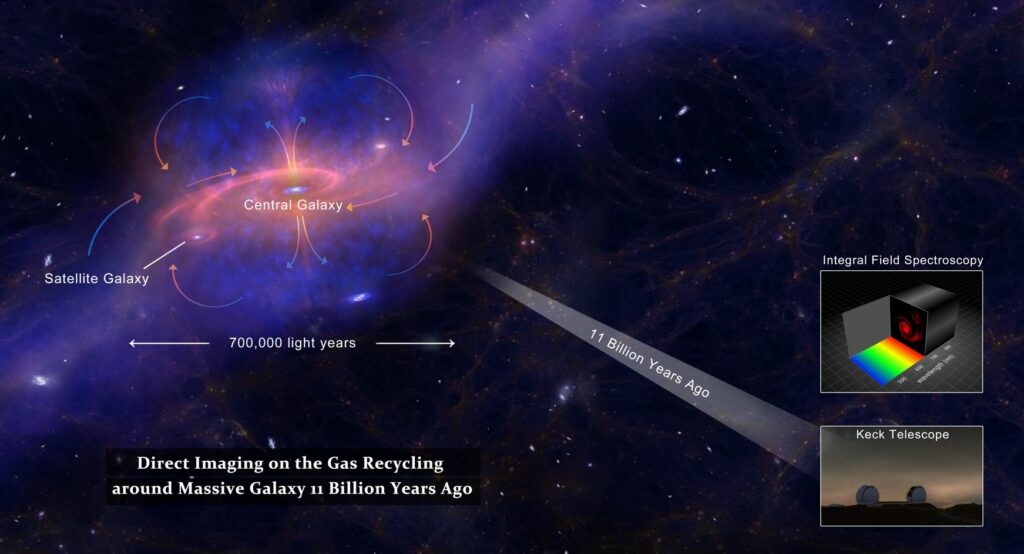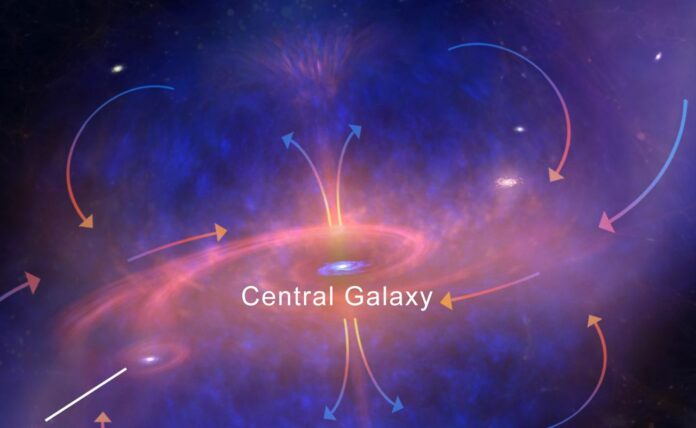Researchers have unveiled a groundbreaking discovery, reporting that streams of intergalactic gas, enriched with elements heavier than helium, elegantly encircle and spiral into a colossal galaxy observed at Redshift 2.3.
These findings provide compelling evidence of gas recycling during galaxy formation in the early Universe.
Galaxies come into existence as they gradually accumulate gas from the surrounding circumgalactic medium (CGM) and intergalactic medium (IGM), which then condenses and gives birth to stars.
Both simulations and observations have consistently demonstrated that the process of cold stream accretion, involving the accumulation of pristine intergalactic gas that boasts minimal traces of elements heavier than helium, serves as a vital source of fuel for the remarkable star formation rate exhibited by galaxies during the early stages of the Universe.
Early galaxies undergo stellar processes, including supernovae, that enrich the galaxy’s gas with heavier elements like carbon. Some of this enriched gas is even ejected back into the intergalactic medium (IGM).
Scientists have theorized that this material could be recycled and re-accreted by galaxies, providing them with additional fuel to sustain rapid star formation for extended periods. However, limited observations have been made of enriched gas feeding high-redshift galaxies.
Recently, a team led by Shiwu Zhang and Zheng Cai utilized the Keck II and Subaru telescopes to study gas surrounding a massive galaxy at redshift 2.3.
The team discovered ionized carbon emission lines in the spectra of the region, indicating that the circumgalactic medium (CGM) gas surrounding the galaxy has indeed been enriched with heavier elements in addition to helium and hydrogen.
This finding suggests that recycled gas could play a critical role in the evolution of early galaxies, providing them with the resources necessary for sustained star formation.

After conducting kinematic modelling on the data, it appears that enriched gas streams are spiraling towards a colossal galaxy. This leads Zhang, Cai, and their colleagues to propose that the gas is actually being recycled from a prior era of star formation.
Their calculations reveal that this recycled gas is capable of maintaining the current rate of star formation in the galaxy.
Source: 10.1126/science.abj9192
Image Credit: Department of Astronomy, Tsinghua University
